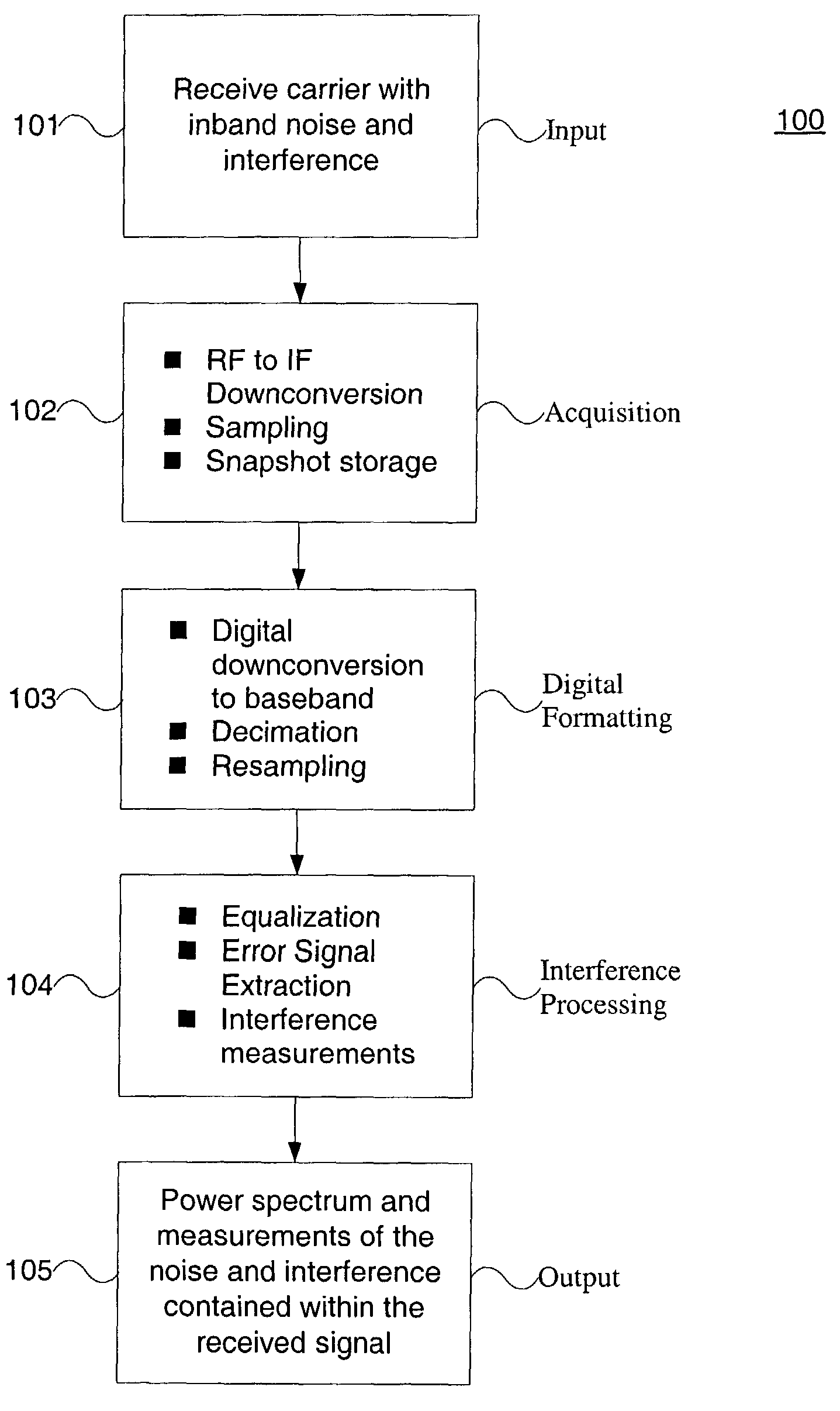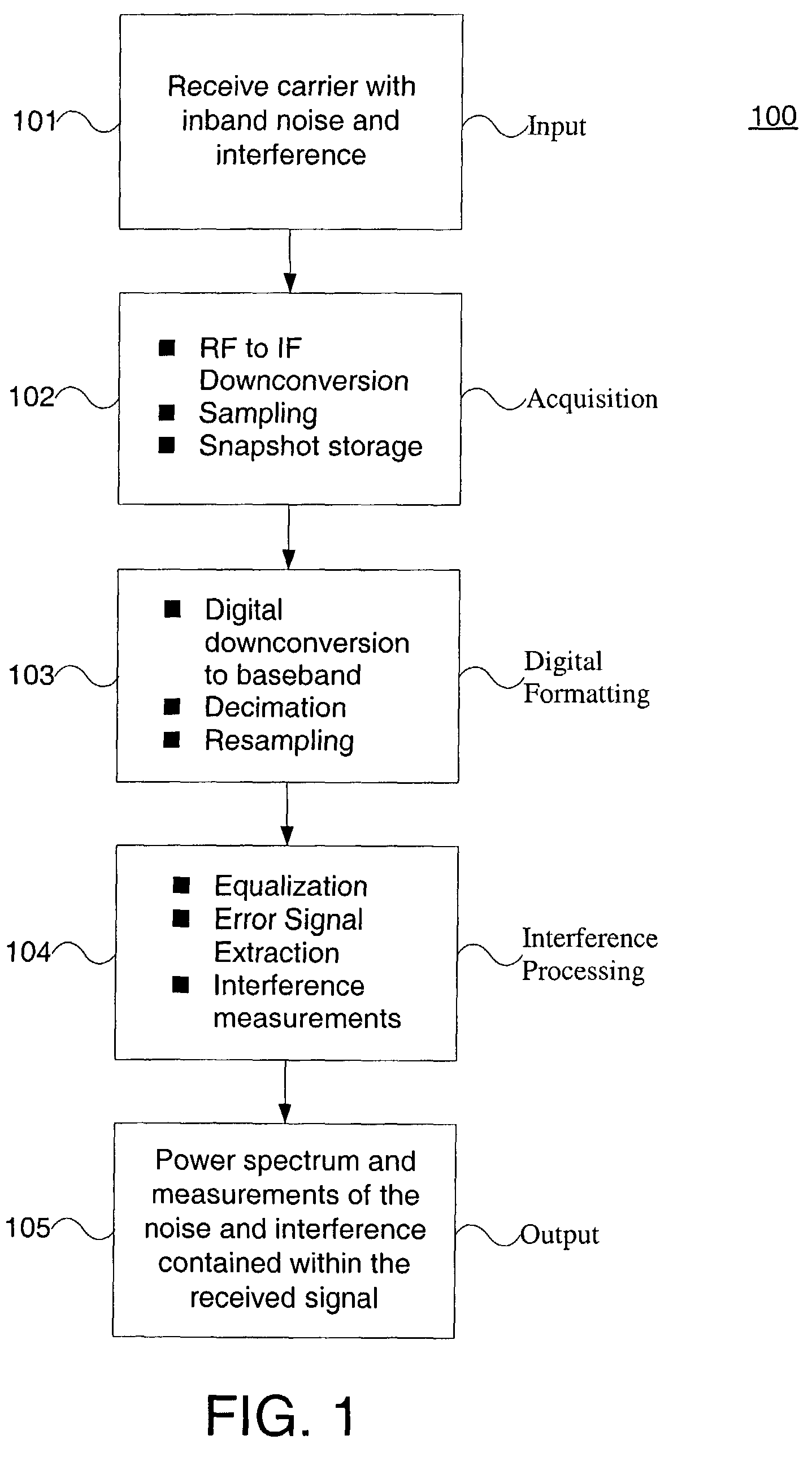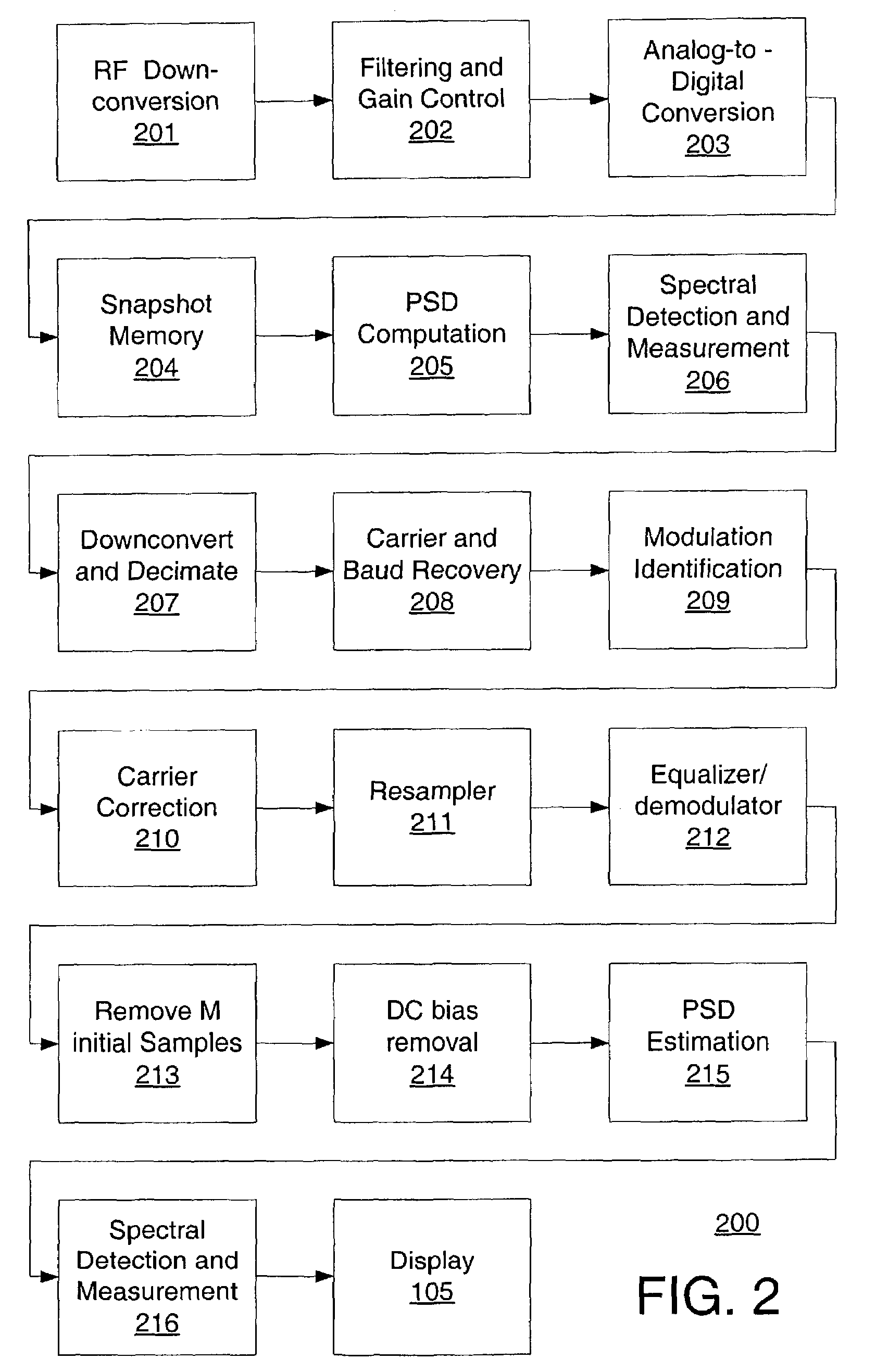Detecting and measuring interference contained within a digital carrier
a digital carrier and interference detection technology, applied in the field of detection of interference and noise in transmitted signals, can solve the problems of interference (including noise) showing up in-band to a transmitted carrier, can be very difficult to detect, and affect the receive quality of the transmitted digital carrier. significant, and the effect of interferen
- Summary
- Abstract
- Description
- Claims
- Application Information
AI Technical Summary
Benefits of technology
Problems solved by technology
Method used
Image
Examples
Embodiment Construction
[0014]FIG. 1 shows a flow diagram of a process 100 in accordance with an aspect of the present invention. A signal, which contains noise and interference, is received in a step 101. The signal is down-converted to an intermediate frequency (IF) and then digitized by a sampling device, in an acquisition step 102. The digital samples are stored in memory for further processing, also in the acquisition step 102. Using the stored samples, the signal is processed to create a re-sampled baseband version of the received signal, in a digital formatting step 103. Using this re-sampled baseband signal, an equalized error signal is created, in an interference processing step 104. This error signal is further processed to create a power spectrum of the underlying noise and interference contained in the received carrier, also in the interference processing step 104. This power spectrum of the noise and interference can be measured for interfering signals as well as displayed to the user, in an o...
PUM
 Login to View More
Login to View More Abstract
Description
Claims
Application Information
 Login to View More
Login to View More - R&D
- Intellectual Property
- Life Sciences
- Materials
- Tech Scout
- Unparalleled Data Quality
- Higher Quality Content
- 60% Fewer Hallucinations
Browse by: Latest US Patents, China's latest patents, Technical Efficacy Thesaurus, Application Domain, Technology Topic, Popular Technical Reports.
© 2025 PatSnap. All rights reserved.Legal|Privacy policy|Modern Slavery Act Transparency Statement|Sitemap|About US| Contact US: help@patsnap.com



